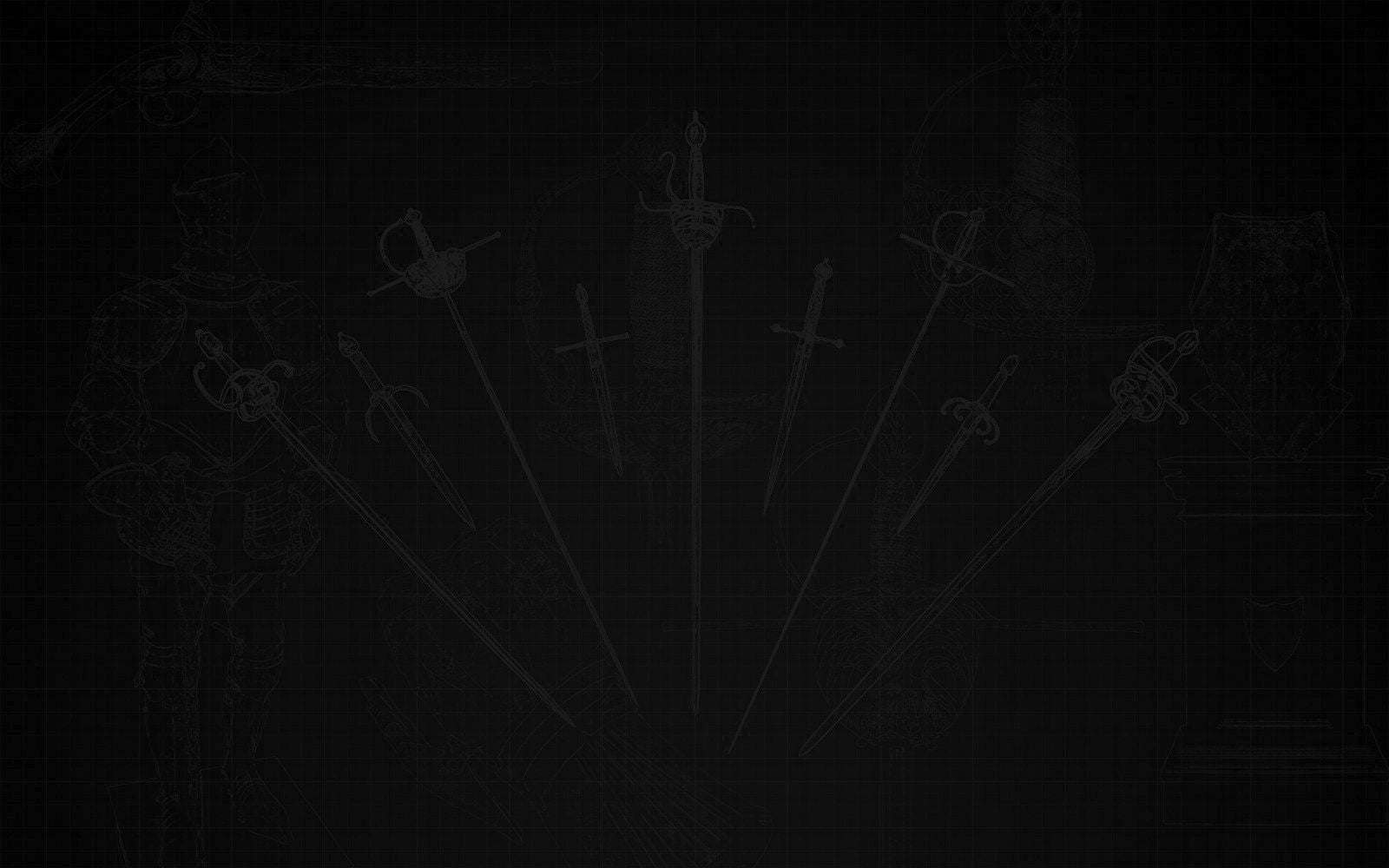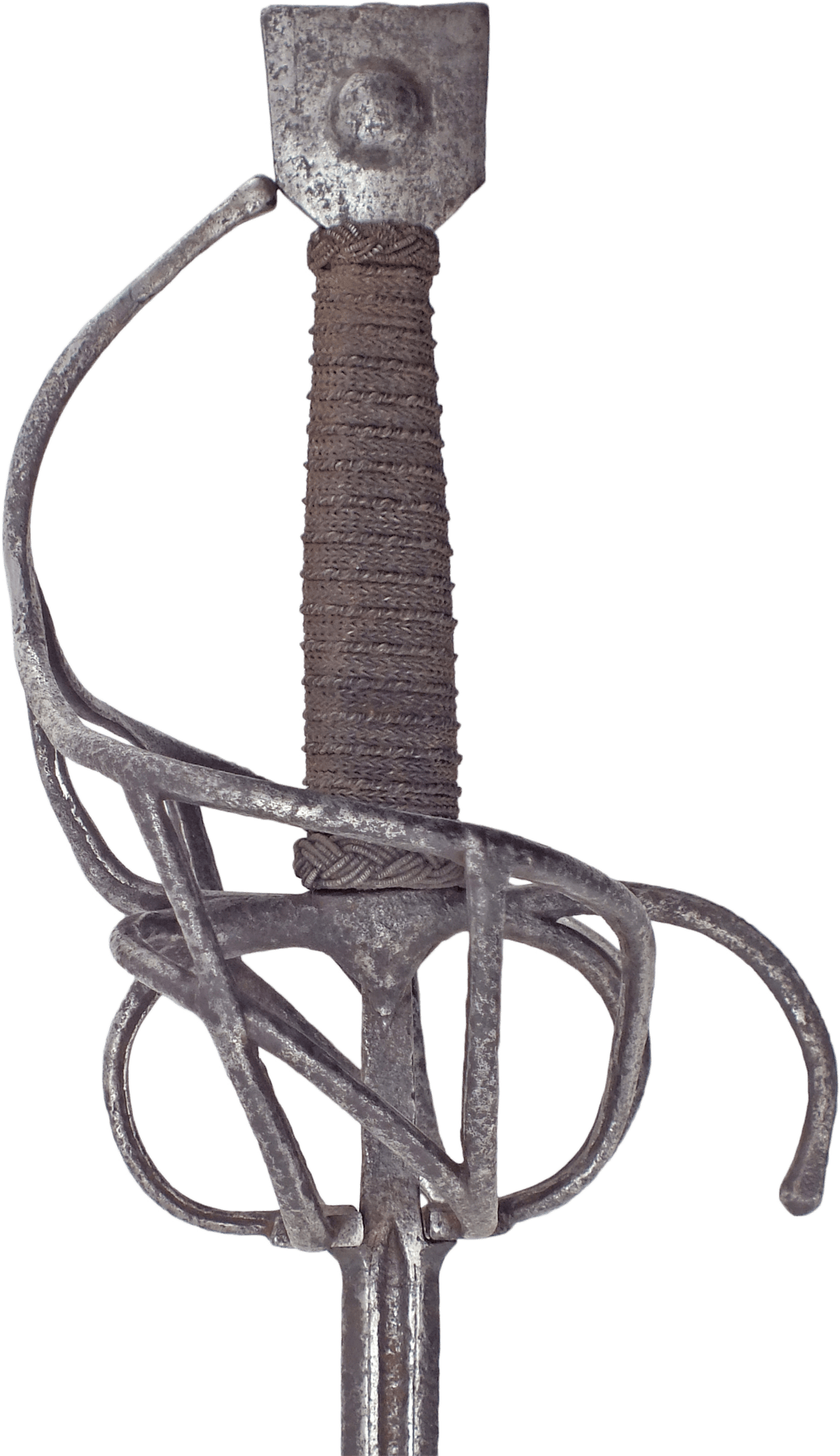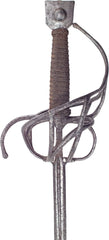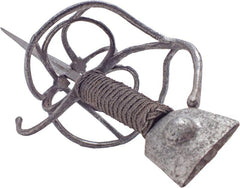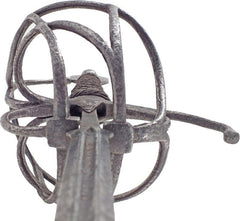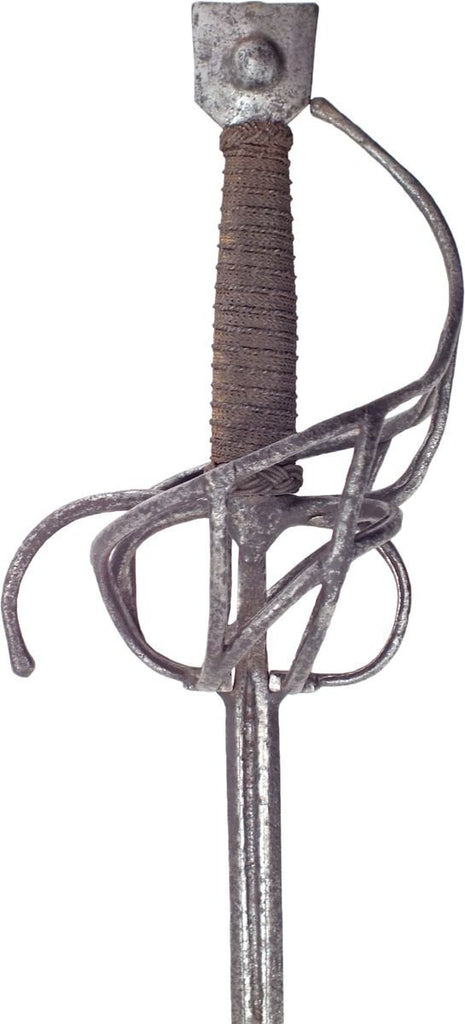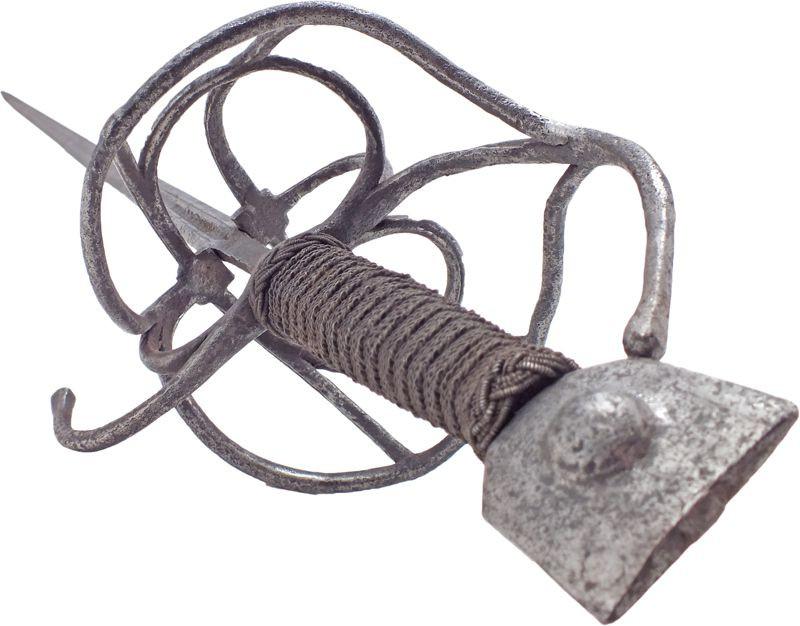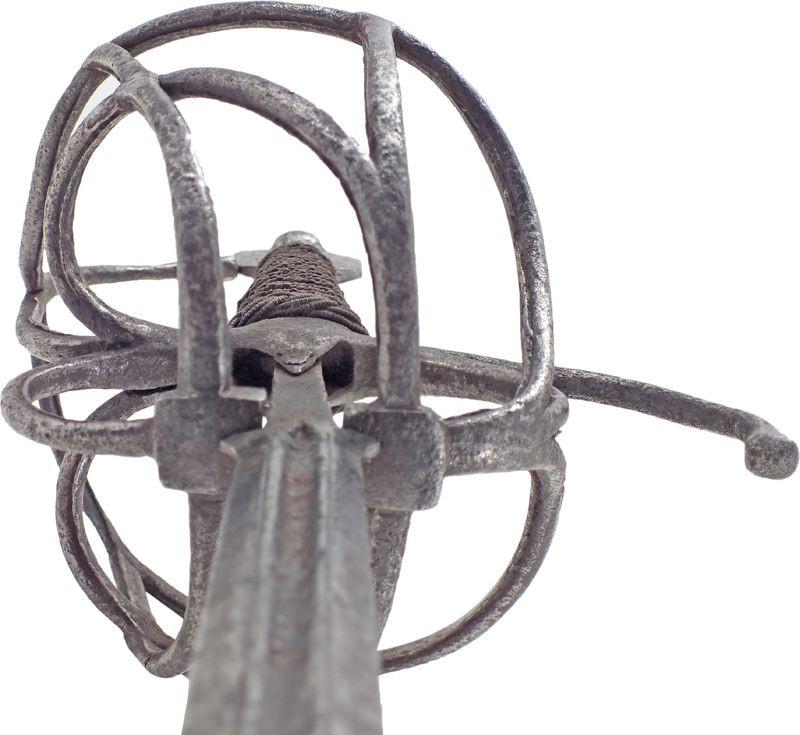In 1967, Claude Blair wrote a short paper identifying a rapier in the Museum of Fine Arts, Boston, as significant to a group studied by Herr Gerhard Seifert, and published in Deutsches Waffenjournal, Dec. 1966, P.42-7. The purpose of the study was to explore, if not discover, the origin of the schiavona. Twenty swords which precede the schiavona form but contribute to it were examined. Blair sought to add a previously unrecognized example to the group, #03.1074 from the Museum of Fine Arts, Boston. He correctly pointed out that the triangular shape of the trellis basket guard and the shield shaped pommel with a raised boss each side, relates it to the group and indicates a maker "used to making (schiavona hilts)". He further states that "No other comparable rapier appears to be recorded". The present rapier is comparable and very closely related to the Boston example, and the Seifert study group. It is made without a forward quillon, and predates the Boston example, which has scrolled down turned quillons, by about two decades. In addition, it has the rare and perhaps even unique feature of each hilt bar being inlet for a sprung in plate which resulted in a closed, cup originally. (The Boston example has plates in the bottom two openings.) As all plates are now lacking, they likely were removed in its working life as upsetting the balance, particularly in view of the light weight pommel. The blade bears the universal cross and orb marks and an indecipherable inscription in each fuller.
Blade length: 39"




